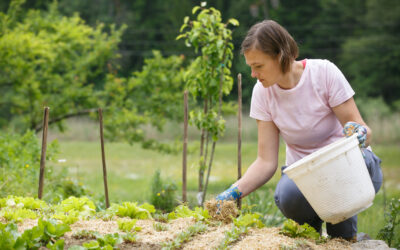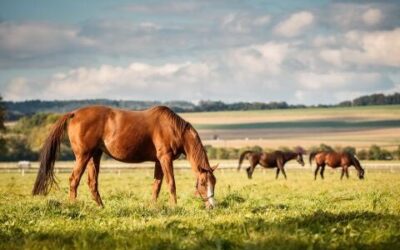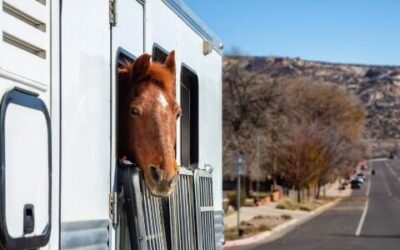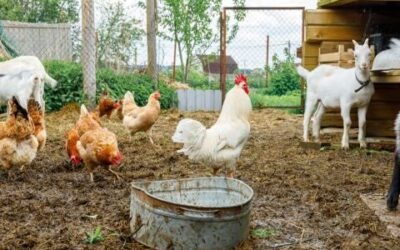Two Northeast Farms Enjoy a Rewarding Season
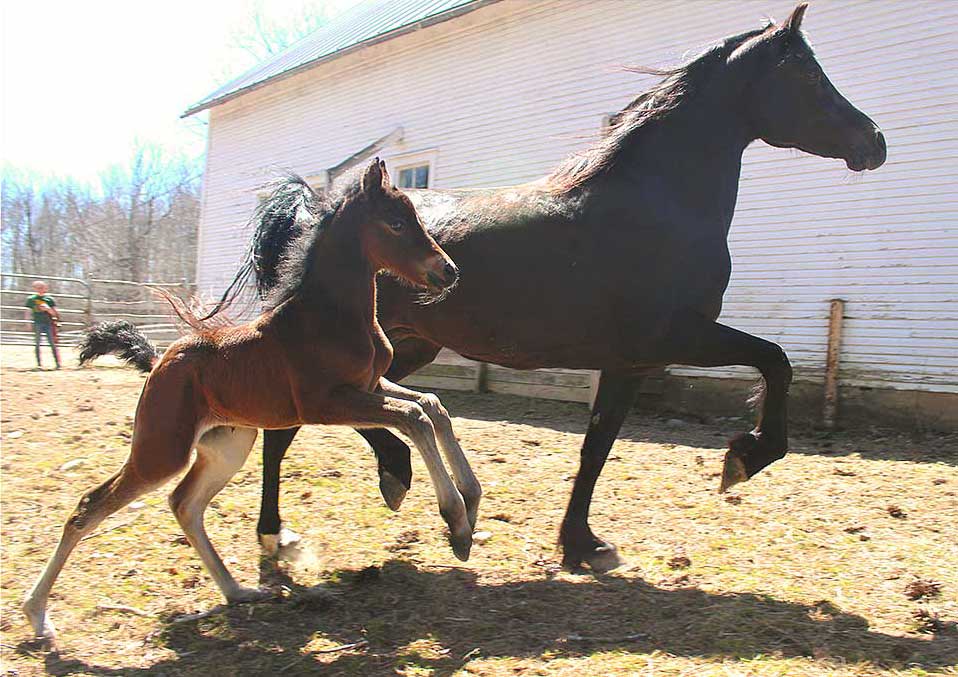 If you are looking for Shooting Star Farm owner Scot Tolman this spring, you can find him in the barn. It’s foaling season, and his first foal is due any moment, one of around a dozen they will produce this year. “I have my eyes on every horse every day,” he said. Tolman and his family own and run the breeding farm in Spofford, New Hampshire, a village outside of Keene. Shooting Star is one of the country’s top breeders for their award-garnering keuring champs – Dutch warmblood horses of KWPN (Royal Warmblood Studbook of the Netherlands) designation. Its horses are of exceptional pedigree, acquired after great scrutiny before becoming a Shooting Star horse that can be booked for breeding. But while the SSF Stallions are stunning, it’s understood that the mares are the real stars, especially now.
If you are looking for Shooting Star Farm owner Scot Tolman this spring, you can find him in the barn. It’s foaling season, and his first foal is due any moment, one of around a dozen they will produce this year. “I have my eyes on every horse every day,” he said. Tolman and his family own and run the breeding farm in Spofford, New Hampshire, a village outside of Keene. Shooting Star is one of the country’s top breeders for their award-garnering keuring champs – Dutch warmblood horses of KWPN (Royal Warmblood Studbook of the Netherlands) designation. Its horses are of exceptional pedigree, acquired after great scrutiny before becoming a Shooting Star horse that can be booked for breeding. But while the SSF Stallions are stunning, it’s understood that the mares are the real stars, especially now.
When it comes to the next generation of award-winning horses, all eyes are on their care through breeding, gestation, birth, and beyond.
Weight Maintenance: A Main Health Concern
The primary health concern for broodmares is meeting their changing nutritional needs throughout the stages of their 340-day pregnancy. Nutrition is the biggest expense for a breeder, and quality hay is the largest expenditure for Shooting Star Farm. A poor hay year can mean big costs. “Just because the quality of the hay is down doesn’t mean they give you a lower price on the hay,” Tolman lamented. His usual 1/3 bale per horse per feeding for his broodmares rises to ½ when quality is down.
Quality hay, and plenty of it, is necessary for maintaining a healthy and appropriate body weight during gestation, a breeder’s biggest challenge. Foaling puts demands on the body immediately. Breeders like Tolman often keep broodmares with a lot of flesh for just this reason. “I like them fat,” he said. “There are a lot of demands put on their body, calorie-wise, almost immediately.” Climate, too, can exacerbate that caloric drain for farms located in the Northeast. While horses are prolific heat producers if they’re getting a proper diet and do well in the cold, rain, mud, and wind, staples of the season, it can be just one more reason for foaling mares to be burning through calories. Nutrition and body condition score, or BCS (scored at between 1 and 9), play an important role in ensuring a healthy pregnancy. Fertility and foaling require at least a score of 5, and that score must be maintained throughout the term. If weight isn’t maintained, it can be an arduous process gaining it back.
Nutrition for the Needs of Each Horse
During a mare’s last trimester, requirements for protein, calcium, sugars, and phosphorus increase faster than the need for energy. According to the University of Minnesota Extension, while quality grass or alfalfa can meet these requirements, supplements may be needed to meet needs for phosphorous and calcium. The ratio of phosphorous and calcium is critical for the foaling mare. Deficiencies or ratio imbalances can lead to disorders of the skeletal system and ensuring proper levels can prevent a host of growth and performance issues. In addition, vitamins and minerals including copper, zinc, manganese, and iron may need to be supplemented (read more about copper supplement in the last trimester). Vitamin E, which helps with the passive transfer of antibodies to the foal, can be a critical as well.
Kimberly Demars is the Farm Manager at the University of Vermont Morgan Horse Farm. Her broodmares, historic Morgan horses, one of the earliest horse breeds developed in the country, are primarily out on pasture through the spring and summer months. They receive clean grass hay and grain specifically formulated for the lactating and pregnant broodmare, and vitamin and mineral supplements tailored to the needs of each horse. While nutritional needs for mares are generalized, especially within breeds, breeders consistently find specific needs. Even with the Morgans, Demars finds outliers requiring different levels of attention, calories, and nutrition. An equine nutritionist is a good source for making sure mares are getting their specific needs met.
At Shooting Star Farm, horses receive plenty of grain with their daily ration. Tolman is always on the lookout for a better product for his horses, regularly shopping for feed companies that will work with him to produce the right blend of important nutrients that suit his horses’ needs. Because the selenium content in the area is poor – levels in hay and grass vary greatly from region to region – Tolman is working with companies that would increase the selenium content. Lack of selenium is known to cause growth issues in foals, leading to a risk of weak pasterns or bone deformities. It can also affect fertility, an issue Tolman started noticing in his own horses last year. He started supplementing, and his mares started getting pregnant, a trend he’d like to continue. (Selenium can be over-supplemented; consult a veterinarian for individual horse’s requirements.)
Focus on the Last Trimester
During the first trimester, a mare’s nutritional requirements do not change from those needed for maintenance. In fact, owners should be conscious of unnecessary overfeeding during this time. But the wise breeder keeps their eye on their horse and the calendar. In the later stage of pregnancy, needs change. Demars said most seem to “waddle” right through it unscathed, but as the mare gets closer to parturition, Demars often observes some discomfort, which can affect feeding.
Part of these changes occur because the fetus does most of its growing during the end of gestation. A mare can be expected to gain between 9-12% of her body weight during pregnancy and two-thirds of that occurs during the last three months. As the fetus takes up more room, mares may have less appetite due to the decreased room in the abdominal cavity. In some cases, replacing some of the bulky hay rations with an alfalfa-based forage, for example, can benefit both mare and fetus. And, because foals will begin nibbling at around two weeks, starting a feeding program will also provide a solid foundation for the foal.
Replacing some of the bulky hay ration with an alfalfa-based forage like Lucerne Farms “Alfa Supreme” during the last trimester can benefit both the mare and her unborn foal.
Lactation and the Nursing Mare
Duties of motherhood take a toll on mares. In fact, their energy requirement during nursing is said to be similar to a race horse in training. Mares will produce about 3% of their body weight per day in milk, decreasing to 2% at three months. Lactating mares require nearly twice the energy compared to their maintenance requirement, dropping accordingly at three months. Attentive breeders also know to increase calories when milk production starts, though this again will vary by the horse. An embryo transfer mare currently at Shooting Star Farm is a draft cross, and Tolman is alert to the possibility that with the lineage of a large, working horse, she may produce too much milk. An excess of milk production – producing more than the foal needs – can affect growth, just another potentiality that keeps Tolman from straying far from the farm.
For nursing mares who are down in weight, increasing weight will, again, pose a challenge. Quality forage with a mineral supplement can meet their needs, and most recommendations include feeding a grain/protein mix in addition. A “drying out” period will follow after a period of about eight weeks, in which milk production stops. This can be facilitated in some cases by “creep feeding” foals to establish a foundation of good nutrition.
The energy requirement of the lactating mare during nursing is similar to that of a race horse in training.
At Morgan Horse Farm, lactation and the final stages of pregnancy means a period of “exercise, along with clean hay and several smaller feedings of grain,” for Demars and her team. Small, multiple meals help to increase total feed throughout the day, ideal for maintaining appetite. The team keeps a close observation of their horses during this time. They’ll be doing just that in over the coming weeks: they welcomed their first foal on April 15, and the current count is three on the ground with five on the way. Those in the area can consider a visit…the farm is open to visitors in May.
Visit UVM Morgan Horse Farm.
Learn more about Shooting Star Farm and follow Scot Tolman’s Journal about KWPN breeding, philosophy and life.

